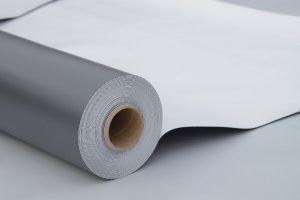In today’s commercial building market there are many types of roofing systems, all with their own applications and benefits. Most fall into one of these categories: single-ply, built-up, modified bitumen or metal roofing.

Single-ply membranes are frequently referred to by their chemical acronyms. A local Boca Raton roofer informs us that the most common single-layer membranes are polyvinyl chloride (PVC), thermoplastic polyolefin (TPO) and ethylene propylene diene monomer (EPDM). These systems have a long life cycle that usually depends on factors such as the thickness of the membrane sheet and the type of attachment.
Single-ply systems are divided into two categories: thermoplastic and thermoset materials.
The joints on thermoplastic materials (PVC and TPO) will form a single membrane, if they have been properly welded with hot air. After that, the entire membrane will soften slightly in hot weather and harden slightly in cold weather. These types of roofs are very reflective of ultraviolet rays – if they come in white color -, have a low incidence of joint defects and are flexible enough to conform to the various movements of the roof.
Other benefits:
- Long service life. Manufacturers typically indicate on their products an approximate service life of 50 years, provided that the roof has not been subjected to mechanical damage or its initial installation has been performed flawlessly.
- All types of roof membranes, regardless of the manufacturer, are made in large sizes. The length of a membrane roller can reach 60 m, and its width varies between 0.9 and 15 m. Due to this diversity, you can choose the best option for your roof, which will ensure the best fit, without cutting too much material and complicate the roofing process.
- The special characteristics of thermoplastic materials, such as non-combustibility, frost resistance and resistance to ultraviolet radiation, make the surfaces coated with this type of single-ply membranes retain their original properties, being also resistant to tear and perforation.
- The installation of thermoplastic single-ply membranes is not very complicated. Due to their light weight (1.3 kg / sq. meter) and lesser thickness (from 0.8 to 2 mm), the material is easy to handle, even when working with large rollers. Additionally, the installation procedure of a single ply roofing system does not require compliance with any complex building codes.
A single ply roofing system can also be made of thermoset materials (EPDM), which include main polymers, chemically cross-linked; once the curing agent has been applied to a thermoset polymer, it can bind to similar materials only with the help of adhesives.
Improved characteristics of EPDM synthetic rubber products include: excellent stability against the influences of weather, sunlight, ozone, acids and caustic solutions. EPDM also has long-lasting flexibility and elasticity to avoid cracks, has good tensile strength and resistance to a very wide temperature range.
Additionally, EPDM is very long-lasting, it doesn`t really age, being therefore suitable for use wherever these special characteristics are needed – from waterproofing flat roofs, windows and door trims in the automotive industry, garden roofs, ponds or pools and many other waterproofing applications.
